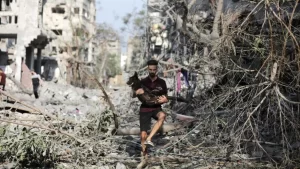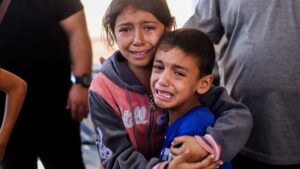The globalization of violence
Do we publish this video? The answer was a definite no from everyone on the team. We followed several social media accounts and pages that published it with the aim of triggering public response against it. Several individuals contacted us, whether directly to my personal account or to the account of the Palestinian Animal League. They were wondering why such acts happen? How do you verify the source of the videos? What are the measures, if any exist, and procedures that can be taken to treat, rehabilitate, or punish the perpetrators of crimes against helpless creatures? Are the existing laws adequate for that purpose?

Days after the incident of killing a cat in cold blood by female teenagers in one city in this world, we received a similar case here in Palestine. The cat was unable to walk on its back legs, and appeared to have lost the sense of pain or got used to it due to the paralysis in the back part of its body.
One of the first things that came to our mind was the importance of having control over these videos before they are made available to children, particularly those who have personal issues and have excessive energy levels that transform into violent acts as they attempt to imitate some of the things they watch. This could constitute a major threat to the personality development and growth of these children.
When some adults found the cat in a very bad shape, they brought it to the Pal Animal League. The cat was too scared and completely helpless. It appears that the person who was using violence against the cat was unable to continue with his crime and decided to stop. This raises even more questions in our mind: was that perpetrator acting this way out of curiosity and experimentation? Or, is it that violence has become more globalized in a manner that fuels human behavior with more violent ideas? Before the cat was brought to us, it was abandoned for some time allowing worms and insects to feed on the multiple wounds and damages to its body. The cat went under a surgery, was cleaned, provided with nutrition and anti-biotics, but its body could not take it any longer.
Many of the scenes and clips that are shown or circulated around the world shock us in the beginning. As a reaction, we might curse the perpetrators, then we get used to it, we accept that these incidents do take place as something that humankind has gotten used to. We tolerate it while others are excited and gain skills and have the curiosity to try and inflict pain on animals for entertainment.
We have often repeated this, the fact that the cases we receive are only symptoms of a sick behavior among humans. Saving dogs and cats will not prevent its re-occurrence to other animals. It will happen over and over again. We should always focus on the real cure, on addressing the root cause for this, namely, the human behavior.
I will be very honest with you. When such incidents take place, we as organizations that work for animal welfare and rights mobilize to save the animals and use them to speak to the emotions of the public to a large extent. Even if these are very few incidents, they are publicized as success stories that attract the approval of others who donate money to support our efforts.
These violent incidents and acts bring us back to the traditional question: would our activities and efforts to save animals stop if these crimes were to stop? Do we them, as supporters of animal rights, lose our raison d’etre?
For comparison purposes, let us ask a similar question: if people stopped committing crimes, would the work of the justice system including lawyers, judges, and the police stop?
Our experience of working in this field raises philosophical questions about the feasibility of such activities or changing the trend from saving animals to raising awareness to deter harm done to them? Just like the police does, in case of a crime or even prior to its occurrence. The police prevent crime, but if a crime took place, the police arrests the perpetrator.
Thus, we can conclude, that our existence does not rely on the significance of such violent incidents against animals taking place, but depends on our concern for the animals as part of nature, feeling the responsibility to protect, nurture, care for them, and save them under all circumstances and not only in the case of crimes.
We save injured animals and we continue to raise the awareness of the public. This has been successful indeed when we had the financial resources that allows us to do that. Things do go well sometimes and instead of the public just watching these incidents and condemning such brutal acts, the attitude has become more proactive as the public intervenes and acts when the opportunity arises to stop similar acts. If this intervention cannot be direct, it can indirect by seeking those who can help the injured animals, or donate money to help save these animals.
It is globalization that spreads all sorts of ideas and experiments. One takes whatever speaks to his feelings or his desires to experiment with. Thus, we need to think carefully about mechanisms that prevent the dissemination of such crimes captured in pictures or on videos? What are the best practices that we can adopt in order to succeed in cancelling or at least minimizing the spread of these crimes?
We need a mechanism that helps us achieve this objective and has a positive impact in terms of controlling the contents of videos that are circulated on social media. We need a mechanism that would help us strike the balance between raising awareness and deterring such crimes.




